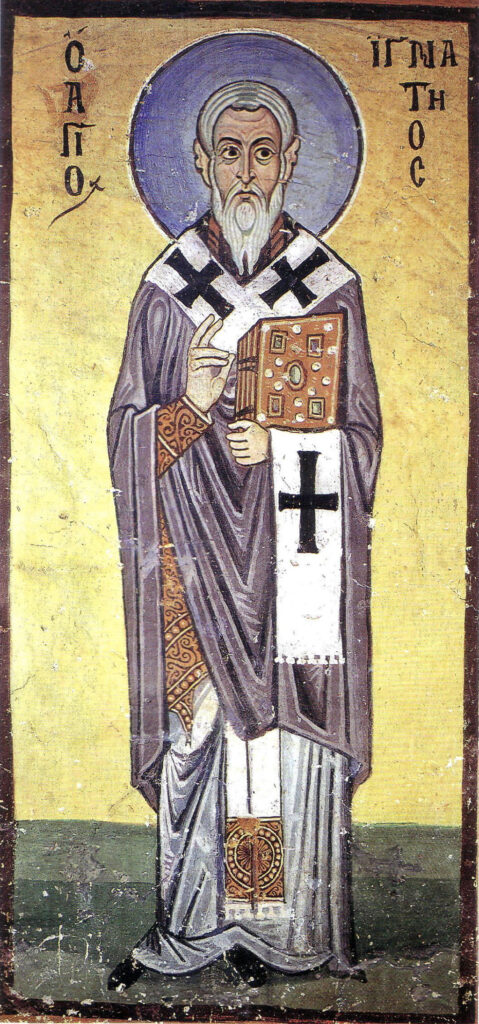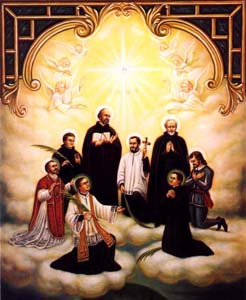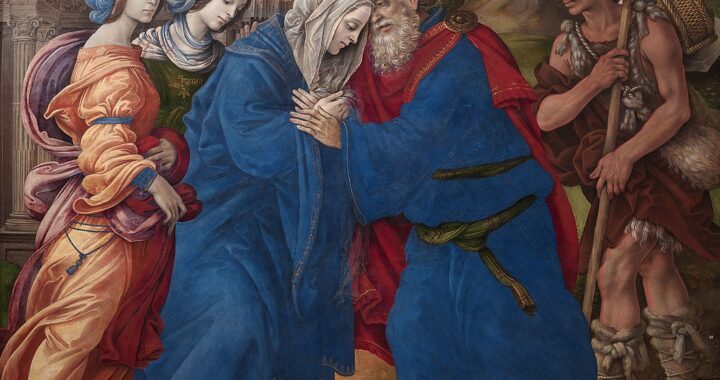


There are some martyrs of the Church who could easily have been canonized as saints even if they had died of old age in their beds, rather than being killed for their Catholic faith. Saint Maximiliam Kolbe (1894-1941), for example, was widely known as a spiritual powerhouse long before he died in a bunker in a Nazi concentration camp, having offered to die for the sake of another man.
There are many Catholic martyrs about whom we know very little except the dates of their deaths and the fact that they chose to die rather than to betray their faith in Christ. This is certainly true for many holy martyrs celebrated by the Church in October.
For example, we know that many men, women, and children died as martyrs in North Africa in the year 483. This occurred because Huneric, king of the Vandals, ordered that anyone who refused to accept Arian teachings, a heresy which he followed, would be put to death. We don’t know the names or ages of all those who died as martyrs for rejecting Arianism, and we don’t know how many were priests, bishops, monks, nuns, or laymen. We just know that some of the Catholics in North Africa survived, remembered the faithfulness of those who had been killed, and kept track of the fact that there were 4,996 of them. For many years, African Catholics remembered those martyrs annually on October 12, and eventually that date was added to the calendar of the universal Church.
But there are other martyrs who are celebrated in October. Ten of them are particularly memorable.
The centurion who stood at the foot of Jesus’ Cross on Good Friday and said, “Truly this was the Son of God!” (Matt. 27:54) is traditionally known by Catholics as Longinus. Tradition also says that Saint Longinus died a martyr in what is now Turkey, and he has been remembered on the Church calendar (currently on October 16) for many centuries. But would we have reason to believe Longinus is a saint in Heaven if he hadn’t died a martyr?
A centurion in the Roman army was a soldier in charge of 100 men, and when he became a Roman soldier, he swore an oath to serve both the Roman Empire and the Roman gods. While Longinus surely didn’t understand all the theological implications of Jesus Christ’s Passion as it transpired in front of him, he clearly recognized that there was something extraordinary about this crucified Man. Jesus’ actions and words were so unlike those of every other condemned criminal whom Longinus had helped to crucify in the past that he publicly blurted out a profession of faith (surely inspired by God, see 1 John 4:15). For his recognition of Jesus Christ as the Son of God and his willingness to publicly proclaim it, Longinus shows us the faith of a saint.
Few writings from early Church leaders have been as influential as the writings of Saint Ignatius of Antioch (c. 69-107). Ignatius was the bishop of the city of Antioch (now Antakya, Turkey) when the Roman emperor Trajan entered the city and demanded that everyone, including the Christians living there, publicly worship the pagan gods. Bishop Ignatius was arrested and brought before the emperor himself, and when Ignatius refused to renounce his faith in Christ, he was ordered to be brought to Rome for execution. The emperor thought it would be good “entertainment” for the people of Rome to watch a Catholic bishop be fed to wild lions in the Colosseum. As Ignatius traveled to Rome in chains, the Christians of each city came to greet him along the way.
If they thought they needed to encourage Ignatius, they were wrong; Ignatius encouraged them, and he wrote letters to the Christian communities of six cities afterward. In one of the most famous passages of his letters, Ignatius begs the Catholics of Rome to not use their influence with Roman leaders to try to save him from martyrdom. Instead, he expresses his willingness to be literally consumed by wild animals. Just as amazingly, he ties this description to our teaching about the Eucharist, which we consume. Ignatius’ letters indicate the traditional Catholic understanding of what is now called transubstantiation, which is why many non-Catholics have found themselves becoming Catholic after studying the writings of Saint Ignatius of Antioch. For his theological depth as much as his fortitude in facing death, Ignatius is celebrated in the Church’s calendar on October 17.
The Jesuits of France sent many missionaries to the French colonies in North America in the seventeenth century. Eight of those missionaries died as martyrs in the New World and are celebrated together on October 19. All died particularly gruesome deaths and valiantly faced martyrdom, but one could argue that they could have been named saints even if they had not died at the hands of the native peoples they gave their lives to serve.
Imagine leaving a world of seventeenth-century conveniences—wagons, sailing ships, and printing presses, for example—and living among the members of a nomadic tribe, where comforts are few and where access to basic medical care and sometimes food is limited. Saint Noel Chabanel had volunteered to travel to North America to serve the native Hurons as a Catholic priest, but he found it very difficult to live as they did. Still, he remained at his assignment until his death.
On the other hand, Saint John de Brebeuf found that his previously poor health improved as he lived among the Hurons. He spent more than two decades among them, earned their respect, and wrote the first dictionary of their language. Saint Isaac Jogues lived among the Hurons but was captured and tortured by the Iroquois. He survived, returned to France to recover, and, rather than giving up, came back to North America to live among and serve the Hurons again, until he was killed.
All eight of these martyrs, just like the other Jesuit missionaries who came to North America in the seventeenth century, chose to live alongside the native peoples, share in their daily struggles, help those in need, and gently lead them to the Savior who teaches peace and forgiveness. Not only did the heroic deaths of these men lead to conversions among the native peoples, but less than ten years later, a little girl was born in a nearby Mohawk village. Through paths known only to God, these martyrs’ deaths apparently later gave birth to the “Lily of the Mohawks”, Saint Kateri Tekakwitha.
All of these martyrs of October are recognized by the Church for their holy deaths, but they should also be recognized for their saintly lives.
Saints Longinus, Ignatius, and the North American martyrs, pray for us!
